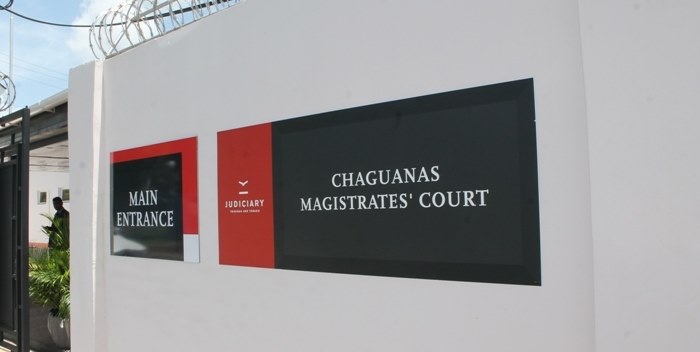|
When relationships don’t work out and couples separate, children are sometimes left caught in the middle. However, parents can work together and put the child’s needs first and ensure that the child has a full and healthy relationship with both parents.
Arrangements can be put in place for custody and access to:
For the court, the welfare of the child is the most important consideration in determining custody and access to a child. What is custody? Custody means the right to possession and care of a child. There are two types of custody:
Who can apply for custody?
The Family Law (Guardianship of Minors, Domicile and Maintenance) Act allows both the father and mother of a child to have equal rights in relation to the custody and upbringing of a child (section 4 of the Act). Any parent can make an application for custody. A parent can be granted both legal and physical custody or a parent can be granted only physical custody or access to the child. If a parent is granted only physical custody this means he or she cannot make decisions affecting the child's life, for example, deciding on the child's religious upbringing. Additionally, besides the child's parents, anyone can apply for custody of a child once the court is satisfied of the reason and is of the opinion that a person has sufficient interest in the welfare of the child. Such persons may include, grandparents, aunts, uncles and close family members.
How do I apply for custody?
The Family Court system in Trinidad and Tobago comprises of the Magistrates' Court and the High Court divisions. An application for custody of a child can be made at both divisions. All divorces are dealt with in the High Court. Where custody is an issue it is easier to have it dealt with as part of the divorce proceedings or as a related matter. Applying for custody in the High Court If the application is made as part of the divorce proceedings in the High Court Family Division then the applicant/parent must fill out a document called a “Form 10: Application Relating to Child(ren).” A document called an affidavit must be presented with this Form 10. An affidavit is a signed document which contains reasons and attached evidence to support the arrangement that you are requesting such as legal custody, shared custody of the child and/or actual custody. Applying for custody in the Magistrates' Court If you aren't yet divorced or if you were never married, a parent can apply for custody through the Magistrates' Court. It should be noted that when applying at the Magistrates' Court, the person applying must do so in their magisterial districts which is based on where he/she lives. You can determine your Magisterial District HERE. Persons living in the district of St George West (Chaguaramas to Mt Lambert) can go to the Family Court in Port-of-Spain. All other persons must go to the Magistrates' Court in their area. For example, if you live in the Chaguanas area, then the application for custody should be made at the Chaguanas Magistrates' Court. The process is done by making a plea (request) before a Justice of the Peace or Clerk of the Peace at the Magistrates' Court in your district. You should walk with:
The plea contains reasons why you should be granted custody and there is documentation which is necessary. The child’s birth certificate, the parent’s valid form of identification and if you are married, a marriage certificate. Also, the respondent’s address (the person you want to serve which is usually the other parent) and your address. If you are not a parent, you must show that you have sufficient interest in the child and provide the forms of identification which apply to you. If the Justice of the Peace finds that you have good reasons to make the application then you are directed to do so. There is a standard form which is given to you at the Magistrates’ Court which you must complete. After, you take the completed form to the counter clerk in the Magistrates’ Court and pay the application fee for the application to be processed. Each application per child costs $3.00TT. After the application is made, a date is fixed for court to appear before a Magistrate usually 4 to 6 weeks after making the application. A summons is also made out in the name of the respondent (that is, the parent or person to be excluded from custody). The parent making the application must take the summons to the summons officer in the police station nearest to which the respondent lives. It is the person making the application's responsibility to ensure that the summons is served on the respondent. The parent making the application should provide the summons officer with the respondent’s proper address, and also make periodic checks with the officer to see that the summons has been served. Once the summons has been served, the officer who delivered the summons signs a return of service form which is included in the court’s file for the matter. If on the date that the matter has been assigned, the matter is called, and the summons has not yet been served, then the matter will be adjourned until the respondent has been served with the summons.
What happens during the custody hearing?
When the matter is called, and all the persons concerned are present, the court will ask whether the application is contested by the other parent (does the other parent agree or disagree to the custody application). If it is uncontested, the court will proceed to deal with the matter immediately. The court will grant custody of a child, if it thinks it fit, having regard to the welfare and the best interests of the child. The welfare of the child is the first and most important consideration above all others. On granting custody to the applicant, the court will usually grant a right of access to the child to the other parent or person(s), and may then go on to make an order requiring that the parent or person(s) excluded from custody pay to the parent granted custody, periodic payments for the maintenance of the child. Where the application for custody is contested, the court usually makes a temporary order for custody of the child, until the final determination of the matter. In making this final determination the court considers the following factors:
Can custody orders be changed? Yes, a custody order may be changed or removed by a subsequent order made by the Court on the application of either parent or, after the death of either parent, or on the application of any guardian. Important Notice: This post does not constitute legal advice. Always consult with an attorney on any legal problem or issue. This website is managed by AURORA Chambers; a law practice in Trinidad and Tobago. Click HERE to receive updates straight to your inbox by subscribing to our newsletter.
YOU MAY ALSO LIKE TO READ:
HOW DO I GET A DIVORCE IN T&T? THE WAYS TO END A MARRIAGE IN T&T. WHAT ARE MY RIGHTS AS A FATHER IN T&T?
0 Comments
Leave a Reply. |
Categories
All
Archives
June 2024
|
LawForAllTT.com |
|








 RSS Feed
RSS Feed